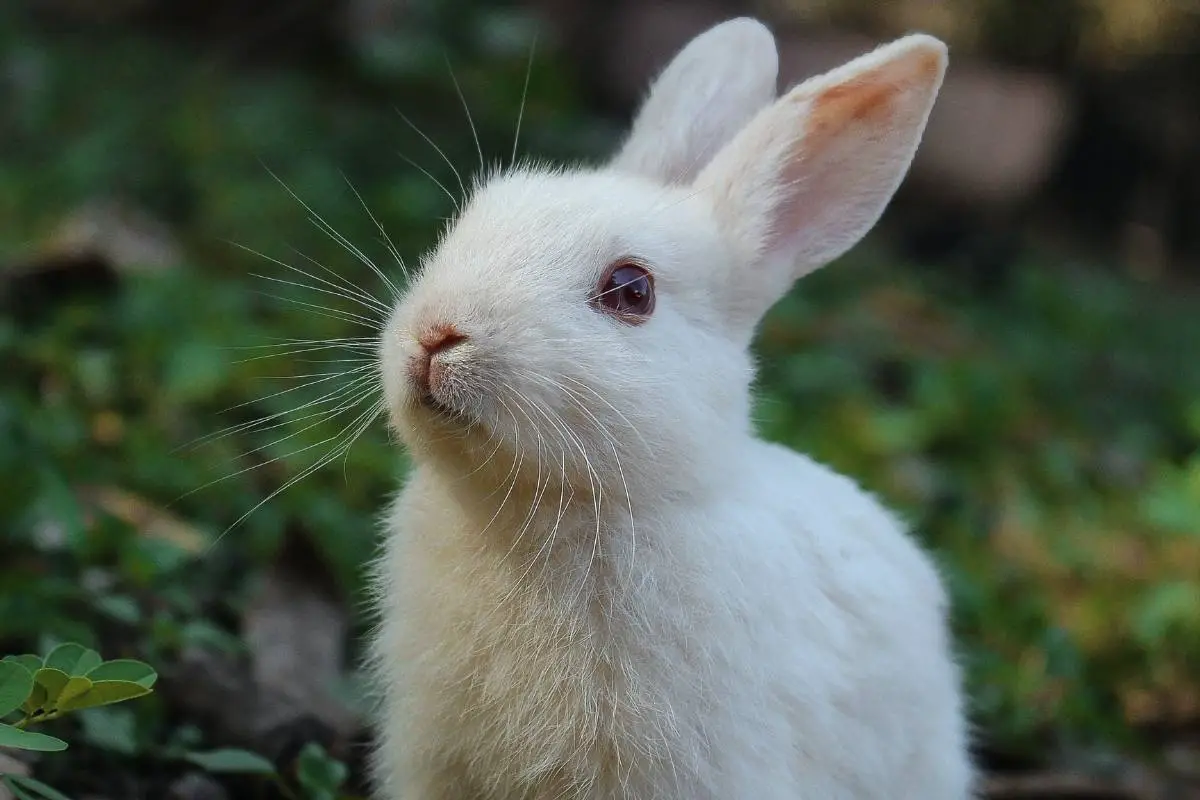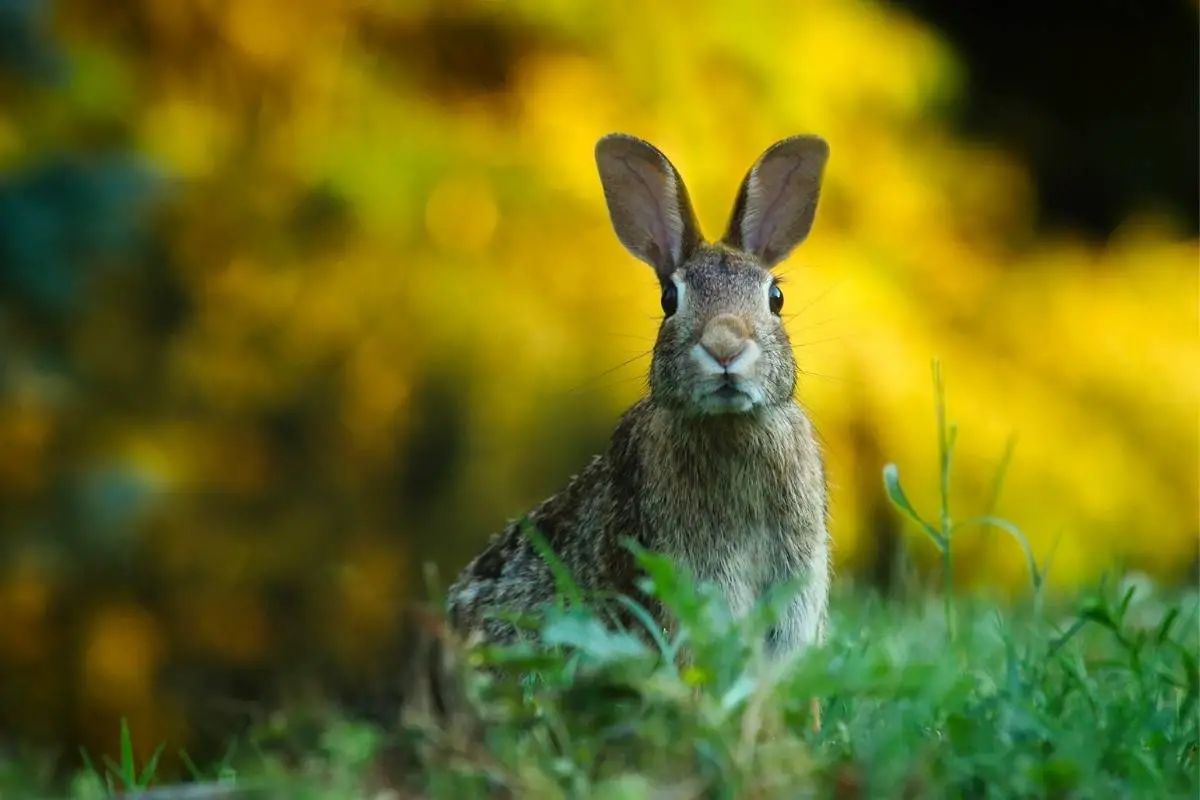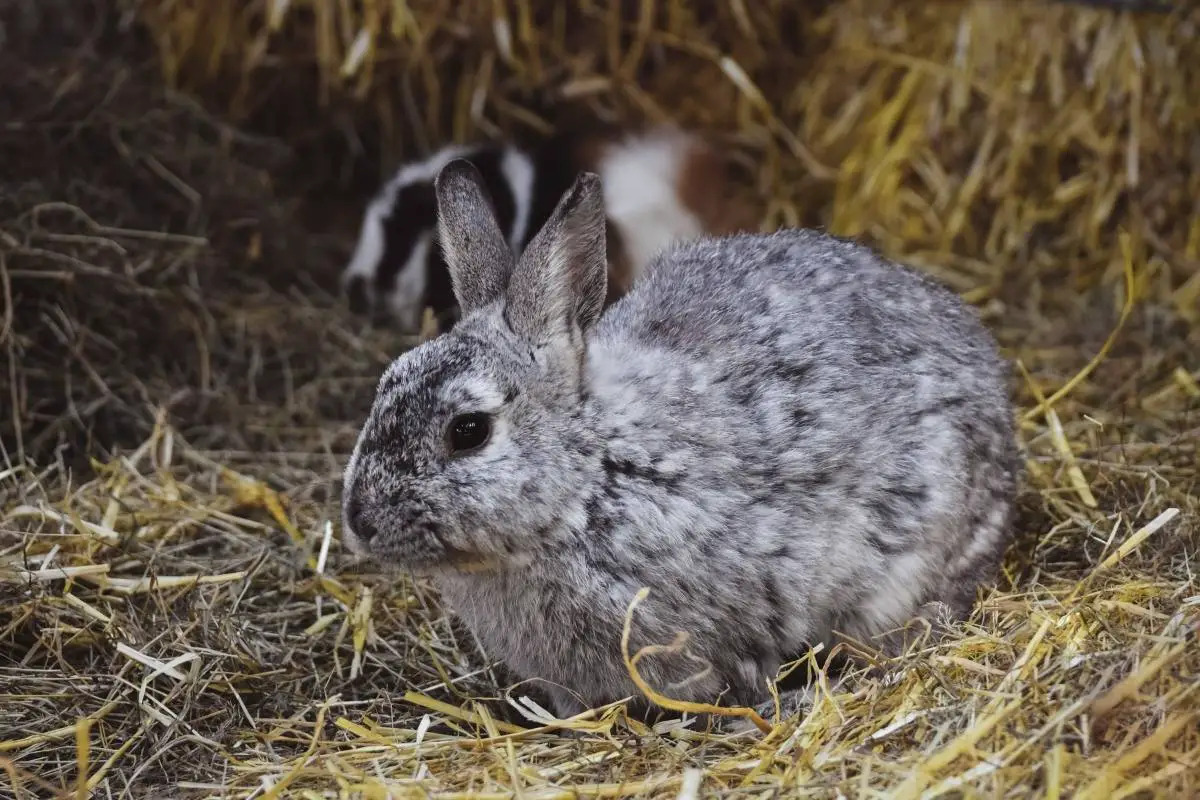Rabbits bring us lots of joy, laughs, companionship, and occasionally, confusion. They sometimes display behaviors that leave us stumped, such as jumping out of our arms when we are trying to cuddle them. This behavior is most likely nothing to worry about and can be remedied, depending on the cause, with a lot of patience.
So, why does my rabbit jump out of my arms? The most likely answer is because rabbits generally just dislike being held. It is nothing personal and is usually no cause for concern, your rabbit likely just needs your patience.
This article will examine the nature of rabbits as prey animals and how that affects their behaviors and preferences, their sensitive areas, some possible illnesses or injuries that could be affecting their behavior, and their big personalities. Some or all these things together may be contributing to your rabbit’s skydiving habit.
Natural Instincts

In the wild, rabbits are prey animals. This means their behavior, both outdoors and in our homes, differs greatly from that of a naturally predatory dog or cat, which most people are used to having in their homes.
Rabbits rely on their keen senses, speed, and agility to stay alive. They usually use those tools to listen for and flee potential danger before it gets too close. While rabbits can defend themselves with their powerful hind legs and painful bites if they must, their instincts are almost always the “flight” part of fight or flight.
With that said, the main driver behind a rabbit’s dislike of being picked up is because in the wild, the only thing to pick a rabbit up would be a predator who is about to make it a meal.
Even rabbit mothers do not pick up their kits the way cats and dogs do. Therefore, being handled in this manner is completely outside of a rabbit’s nature and generally elicits a fear response which manifests as either freezing completely or, as in this case, making a jump for it. Your rabbit’s wild survival instincts are kicking in.
Bear in mind that this does not necessarily mean your rabbit is afraid of you, just of the action itself. Rabbits have excellent distance vision, but their close-up vision leaves a little to be desired.
This is because as prey animals they have eyes set onto the sides of their head, so they have a broad, long field of vision for distance with not-so-great up-close vision. When your hand swoops down to scoop them up, it might startle them even more than the action of being picked up, which can exacerbate the problem.
Domestic rabbits can be taught that this behavior is nothing to fear, but if they were not handled enough as weeks-old babies, it will take a great deal of patience. There are plenty of ways to get your rabbit used to being handled, but you can start by allowing your rabbit to come out of its cage or hutch on its own for a while first.
Rabbits are very perceptive to body language, ours included, and they can usually tell when you are about to try to handle them, which creates stress in a rabbit who does not want to be picked up.
Work your way up gradually to show your rabbit that being picked up is a means to being taken to fun places (outside or to another room to frolic), a way to start petting or grooming, or even an avenue to food! Eventually, with persistence and patience, they will see there is nothing to fear.
Bunny Bellies and Bodies

In addition to their natural disinclination for being handled, most rabbits do not like having certain areas touched, whether that be for grooming, petting, or handling purposes. Typically, these areas include the belly and backsides, which are unacclimatized to being handled.
Further, regarding the prey animal instincts of rabbits, the belly and backside are vulnerable spots—if they are exposed to a predator it could mean bad news.
Most rabbit owners know when picking up their furry friend, you must put each hand under the rabbit, usually somewhere on its underside and its backside, to ensure it is supported so it does not hurt itself.
With these sensitive areas that can create an obvious problem. As with getting your rabbit used to being picked up in general, you can also help your rabbit’s sensitive areas acclimatize to touch. Again, this will take a great deal of patience, but it is worth it to ensure your rabbit’s safety and happiness.
Getting these areas used to touch and being handled is an important step in keeping your rabbit safe. When you go to handle your rabbit, make sure you are supporting their legs as well as their belly and backside, and keep their legs against your body as you hold them.
This will help them feel safer being picked up and will ensure they do not get injured in the process. One of the biggest issues posed by a rabbit feeling fear and trying to jump out of your arms when picked up is the risk of injury.
A rabbit’s skeleton is quite delicate and only makes up about eight percent of its body weight. Because of this, rabbits are at higher risk of skeletal injury than other domestic animals. If your rabbit previously did not mind being picked up but has suddenly decided flight is preferable to being handled, it might be ill or injured
Illness or Injury

As mentioned above rabbits are delicate compared with other domestic animals. In addition to their light bone mass, they have overly sensitive digestive tracts and there are quite a few things that could be bothering your bunny if it suddenly does not want to be picked up. The necessity to pick up a rabbit by at least partially supporting its belly could be causing it additional discomfort or pain if it is experiencing a digestive tract illness. Some common digestive tract-related illnesses in rabbits include gastrointestinal (GI) stasis and hairballs.
GI stasis occurs when food stops moving through a rabbit’s digestive tract, which leads to pain and dehydration and can become quite serious if not addressed right away. GI stasis can be prevented with proper diet and exercise. Some signs of GI stasis in rabbits include:
- Decreased appetite
- Smaller, fewer, or no droppings
- Hunched posture or bloated appearance
- Lethargy
- Teeth grinding
- Grunting
In addition to GI stasis, another common digestive tract condition for rabbits is hairballs. Rabbits groom themselves consistently throughout the day to keep themselves clean, to relax, and even as a status symbol. In the wild, dominant rabbits are groomed by submissive rabbits in a group, and domestic rabbits are no different.
This results in a certain amount of hair being ingested which leads to hairballs. Unlike cats, rabbits have no ability to cough up a hairball if it forms, which can lead to a blockage in the digestive tract. This blockage can cause pain and lead to GI stasis. Fortunately, consistent grooming on your part will help prevent hairballs for your furry friend.
As mentioned above, rabbits are more susceptible to skeletal injuries than some of their other domestic counterparts. If your rabbit has a sudden aversion to being picked up and you do not suspect illness, an injury could be causing your friend additional pain when being handled.
We cannot keep an eye on our cotton-tailed companions all hours of the day, and there may be times when your rabbit injures itself without your knowledge. Unfortunately, it is sometimes difficult to tell when your rabbit is injured.
As prey animals, rabbit’s instincts are to hide any injury or weakness they are experiencing to make themselves less appealing to predators. Therefore, it is important that we, as their human companions, know what to look for if our friends are hurt. Keep an eye out for signs of an injury such as changes in posture or gait, abnormal behavior, or difficulty eating.
If your rabbit is happy and healthy, and does not seem necessarily averse to being handled, it may just have a personal preference of not being picked up.
Personal Preference
Rabbits have great big personalities stuffed into small packages that vary greatly from one rabbit to another. They show us their personalities through all sorts of endearing behaviors making for highly entertaining companionship. Some rabbits love to sit next to their humans and be petted and groomed, while others value their “me time” much more.
Many rabbits jump high in the air and twist around, known as a “binky,” when they are extremely happy, and others run circles around our feet when they want something. They nudge our hands or lick our faces—the list goes on! Like any other personality quirk or preference, some rabbits may enjoy being handled or picked up while others simply do not.
As discussed earlier, this is by no means a reflection of how your rabbit feels about you, it is just part of being a rabbit.
Conclusion
If your rabbit jumps out of your arms when you pick it up or try to hold it, it is likely because most rabbits simply do not like being held. This is the result of wild instincts coming through in our domestic friends and could have something to do with their naturally sensitive tummies and backsides.
However, there could also be an underlying illness or injury you are not aware of, so check your bunny’s behavior and get them to the veterinarian if you suspect your companion is in pain. Finally, you might have a rabbit who just personally prefers not being picked up, but still loves and craves your company on its own terms.
Regardless, this behavior most likely is nothing to worry about and is by no means a reflection of how your cotton-tailed companion feels about their best human friend.

